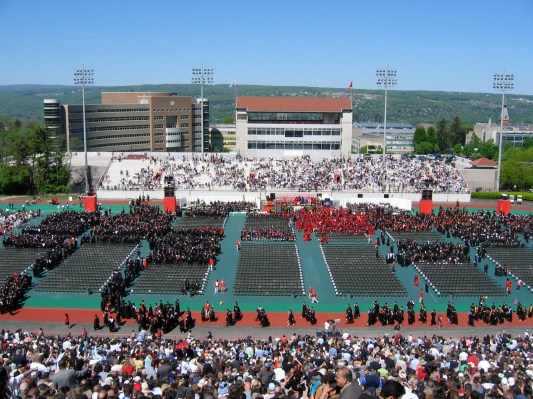International students in the United States who are working toward a science, technology, engineering, or mathematics (STEM) degree may soon find it a whole lot harder to work legally in the country after graduation.
A recent ruling by the U.S. District Court for the District of Columbia has for the moment vacated the extension for STEM students provided by the Optional Practical Training (OPT) provision of the F-1 student visa.
The OPT program allows undergraduate and graduate students who have completed or have been pursuing degrees for more than nine months to work for a year in an area relevant to their field of study. In 2008, the Department of Homeland Security (DHS) announced a 17-month extension for the OPT program for STEM students who have received a degree in one of 183 STEM majors.
The Washington Alliance of Technology Workers challenged this ruling by filing a suit with the U.S. District Court for the District of Columbia in March 2014. The organization alleges that the OPT program exceeds DHS statutory authority and conflicts with statutory requirements such as the labor certifications for H-1B visas. In a decision vacating the 17-month extension, Judge Ellen Segal Huvelle found that the original 2008 extension announced by DHS was “promulgated without notice and comment.”
Noting that an instantaneous vacation of the OPT STEM extension would cause “substantial hardship” to students and adversely affect the technology sector, the court also ordered a stay until February 12, 2016.
While the exact impact of a total loss of STEM OPT extensions is difficult to quantify, 123,328 OPT applications were approved in fiscal year 2013, according to a report by the United States Government Accountability Office (GAO) in February 2014. The GAO report also found that 25,081 students were using the 17-month STEM extension of the OPT program at the time.
The loss of the STEM extension would increase student dependency on employer sponsorship immediately, reducing employment flexibility somewhat. However, the ruling does not invalidate employment authorization for current STEM OPT extension holders, nor does it prevent applications for and receipt of a STEM extension up to February 12.
Due to a cap on H-1B visa issuance, the STEM extension was intended to mitigate the impacts of H-1B oversubscription and issuance caps. Without the extension in place, it is likely that many waiting for the H-1B visa will have to leave the United States after the expiration of the now-shortened OPT period.
It should also be noted that DHS can reissue the rule or a similar one for comment and finalization before the deadline early next year.
In a statement to relevant international students at Stanford University, the school’s Bechtel International Center said that “if there is no new regulation to counteract this ruling, all STEM employment will end on February 12, 2016.” The statement further added that individuals who would be on their STEM OPT extension at that time would lose their F-1 visa status and any work authorization.
“We are reasonably confident that DHS will come forward with additional guidance and perhaps a new rule,” added Stanford’s Bechtel International Center in the same statement.
A petition on the White House’s ‘We the People’ petitions site filed on August 14 has gained 56,577 signatures, as well as reactions from current students and professionals.
An Energy Resources Engineering major at Stanford, who did not wish to be named, said that it was puzzling that she would not be able to get a work permit on the basis of her merits. “It’s frustrating that despite all my efforts I will be the last priority potential hire simply because of the change in regulation,” she stated.
The Department of Homeland Security declined to comment on pending litigation. Their statement suggests that further legal activity regarding the ruling could be imminent.
This article was updated to remove a student’s identifying information.
Disclosure: I am currently an undergraduate student at Stanford University.
